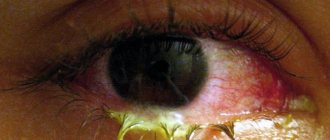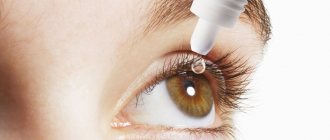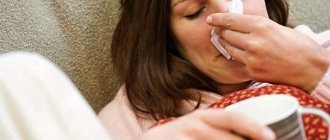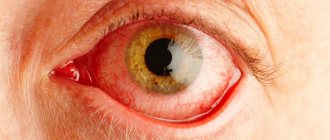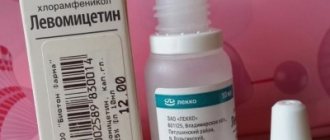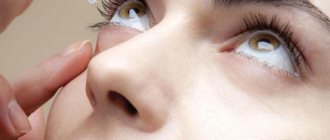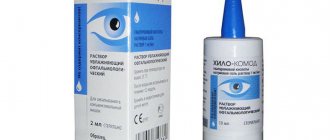Types of drops
Japan, as a high-tech and progressive state, pays special attention to the healthcare sector. Human health in Japan is the highest value, so the country's scientific and financial potential is focused on the field of medicine, which is bearing fruit.
In Japan, methods for treating various ailments are constantly being improved, innovative medications are being developed, both to eliminate diseases and to prevent them.
Maintaining visual function, as one of the main human functions in perceiving the world around us, remains one of the key health care tasks in Japan.
Poor eye health in people is usually associated with a number of diverse causes. In children, vision problems are most often caused by hereditary or congenital factors.
Spending a long time in front of a computer monitor due to professional specifics, and organizing home leisure time in front of a TV screen are negative factors for eye health, characteristic of the lifestyle of the majority of the working population.
A person’s age also makes certain adjustments: over the years, a person’s eye is subject to irreversible changes.
Therefore, there is no universal remedy suitable for solving any problem and for all age groups, and eye drops are identified according to various criteria, including the specifics of the disease and indications.
The following types of Japanese eye drops are presented to the consumer market:
- drops for the treatment of cataracts;
- vitamin drops for eyes;
- anti-allergy eye drops;
- drops for people over 40 years old;
- baby drops
Vitamin drops and possible harm and benefits
To identify the benefits of Japanese eye drops and identify possible harmful effects, a detailed analysis of the component composition of the drops is necessary.
Japanese eye drops may contain the following main ingredients:
- Allantoin is an absolutely safe substance and has regenerating properties at the cellular level.
- Aminocaproic acid alleviates inflammatory processes. This acid does not accumulate in the body and is excreted by the urinary system.
- Vitamin B12 (cyanocobalamin) is a vital vitamin at the cellular level.
- Vitamin B6 (Pyridoxine) is an essential microelement for maintaining vision.
- Potassium L-aspartate is necessary to prevent oxygen imbalance in the mucous membrane of the eye.
- Menthol (aka L-menthol) is an antipruritic agent. This substance is used as a local disinfectant.
- Natural vitamin E is a powerful antioxidant that helps fight the signs of cataracts.
- Prozerin serves to improve visual functions in various ophthalmological problems.
- Panthenol is a vitamin that stimulates the regenerative and protective functions of the mucous membrane of the eye.
- Pyrenoxine is an active substance aimed at preventing cataracts or treating them at an early stage.
- Taurine serves to enhance the metabolic absorption of nutrients in the cell; the component is effective against microdamage to the cornea.
- Sodium chloride is a drug that actively fights excess fluid accumulation.
- Chondroitin sulfate sodium is a substance that constricts blood vessels. Relieves fatigue from the eyes.
- Zinc sulfate monohydrate is a component actively involved in intracellular metabolism.
What is the freshness index of Japanese drops?
Almost all Japanese-made eye products, with the exception of preparations for children and special-purpose medicinal drops, contain Menthol or L-menthol. This substance perfectly relieves itching and has a calming effect.
Immediately at the moment of exposure to the drug containing it, you can feel a cold or slight tingling sensation, which quickly passes, bringing relief to sore eyes. It is a mild antiseptic that soothes and relieves redness by constricting external blood vessels, as well as increasing the tone of internal tissues due to the flow of blood and oxygen.
An additional advantage of this substance is the absence of side effects and addictive effects. .
In Japanese drops it is present in varying proportions, as indicated by the so-called “freshness index” or, in other words, “sensitivity index”. So, this indicator equal to zero indicates the complete absence of menthol, and equal to 7 indicates its maximum possible content. Drops with index 5 give an average effect.
Contrary to popular belief, it is not the radiation from the monitor screen that harms your eyes. The image on a computer screen differs from the eye-friendly print or drawing on a sheet of paper.
The picture on the monitor is self-luminous and flickering, while in the book it is reflected and static. Looking at the screen, we not only blink less often, but also open our eyes wider, trying to read the text, adapt to the level of brightness, contrast, flicker, which means we strain the organ of vision much more than when reading a book.
There is insufficient hydration of the eyes, their surface dries out and becomes inflamed. .
All these negative processes manifest themselves as a feeling of fatigue, redness, irritation, a burning or stinging sensation in the eyes. All these are signs of “computer vision syndrome” - a condition in which visual acuity decreases, the ability of the eye to adapt to work at different distances is impaired, and the eyes quickly get tired when reading.
As mentioned earlier, with infrequent blinking, the integrity of the tear film that covers and lubricates the surface of the eye is disrupted, which leads to the development of “dry eye syndrome,” which requires treatment with special drops.
Prescription for cataracts
Cataract is a serious disease that is a pathological clouding of the lens of the eye. This disease is typical for older and elderly people.
The clinical picture of cataracts manifests itself at the initial stage of the disease with complaints of a sharp decrease in visual acuity.
An advanced form of cataract is characterized by partial or complete loss of visual function by the tactile organ. Cataracts can be prevented and even cured, this dangerous ophthalmological disease by diagnosing it in a timely manner.
In the context of drug therapy, an effective preventive and therapeutic remedy for cataracts are Catalin-K eye drops, produced by a Japanese pharmaceutical concern.
The principle of the therapeutic action of these drops is highly effective, and the treatment mechanism is simple: the main active ingredient of the drug is pyrenoxine, it eliminates the products of impaired cellular metabolism of the ocular mucosa, which are the main provocateurs of cataracts.
Catalin-K drops are a safe but potent remedy, so drug treatment with this drug should be accompanied by consultation with an ophthalmologist.
Eye drops for glaucoma
When treating glaucoma, the doctor uses all methods to reduce increased intraocular pressure. This, in turn, helps reduce the amount of damage to the optic nerve. As a rule, in the initial stages of the disease, eye drops are used that eliminate intraocular hypertension.
An important condition for effective treatment is regular use according to the instructions written by the doctor. If monotherapy is not effective enough, the ophthalmologist usually prescribes eye drops from a different chemical group. These drugs may potentiate each other's effects.
Since all eye drops that are used to treat glaucoma are absorbed into the choroidal vessels, they can penetrate into the systemic circulation in small quantities.
Some components of antiglaucoma medications negatively affect the functioning of the heart, blood vessels, and respiratory system. Therefore, it is very important for the doctor to know if the patient has any systemic chronic diseases.
If the patient for some reason (health status, low adherence) is not able to regularly instill glaucoma medications, then it is better to choose an alternative method of treatment.
Types of drops that reduce intraocular pressure
Drops for the treatment of glaucoma are produced in large quantities. Each of them contains certain drugs, which can be divided into several groups:
- Based on the active component, beta blockers, prostaglandins, cholinomimetics, etc. are distinguished.
- According to the mechanism for eliminating intraocular hypertension, there are drugs that reduce the synthesis of aqueous humor, drugs that improve its outflow, and combined drugs.
Prostaglandin analogues
Prostaglandins are the safest and most effective agents for the treatment of glaucoma. 2 hours after instillation of this group of medications, the pressure inside the eye begins to decrease, and the maximum effect is observed after 12 hours.
This group of drugs includes Travatan, Tafluprost, Xalatan. All of them appeared relatively recently, but due to their high efficiency and duration of action (up to 24 hours), these drugs have become very popular in the treatment of patients with glaucoma.
Prostaglandins help restore the outflow of aqueous humor through additional pathways. However, these drugs also have some side effects. These include:
Beta blockers
The mechanism of action of beta blockers is to reduce the synthesis of aqueous humor. They begin to act half an hour after instillation, and the effect reaches its maximum after about 2 hours.
The frequency of use is higher than that of prostaglandins (usually 2 times a day), which is less convenient for the patient.
Often, beta blockers for the treatment of glaucoma are combined with prostaglandins to increase the effectiveness of therapy.
There are a large number of eye drops belonging to this group (Timolol, Okumol, Arutimol, Okumed, Okupress, etc.). The active substance used in the drops is usually the same, so they are all interchangeable.
Beta blockers can have negative effects on body systems, such as causing bradycardia or bronchospasm. Therefore, this group of drugs is not used in patients with concomitant pulmonary emphysema, heart or vascular diseases, or bronchial asthma.
Highly selective beta blockers, which have significantly fewer side effects, include Betoptik.
Carbonic anhydrase inhibitors
Carbonic anhydrase inhibitors include Azopt and Trusopt. The mechanism of their action is associated with inhibition of intraocular moisture production.
These medications are quite effective and, at the same time, safe, since there are practically no side effects when using them. The only thing is that patients with certain diseases of the excretory system need to be careful.
Typically, carbonic anhydrase inhibitors are prescribed for double use; they are often combined with other groups of drugs (beta blockers, prostaglandins).
Diacarb tablets have a similar effect to Azopt, so it can also be prescribed to patients with glaucoma, especially during an acute attack of intraocular hypertension.
Cholinomimetics
The drugs Pilocarpine and Carbocholine are used to normalize the outflow of aqueous humor through the drainage system. They lead to narrowing of the pupillary opening and contraction of other muscle fibers, as a result of which the angle of the anterior chamber is freed from obstructions.
Most often, cholinomimetics are prescribed to patients with angle-closure (narrow-angle) glaucoma to increase the size of the angle. The frequency of use is 1-2 times a day.
These drugs are combined with drugs from other pharmacological groups (beta blockers, prostaglandins, carbonic anhydrase inhibitors).
Due to the pronounced narrowing of the pupillary opening, when using these medications, the field of vision may narrow and pain may appear in the temporal, frontal and superciliary areas.
Combination drugs
For the convenience of patients, several eye drops have been developed, consisting of active substances from different groups. This allows you to reduce the number of vials with medications, and sometimes the frequency of instillation.
Most often, ophthalmologists prescribe the following combination drops:
- Xalacom, which includes Timolol and Xalatan;
- Cosopt, consisting of Timolol Trusopt;
- Fotil, which contains Pilocarpine and Timolol.
Effective eye products with vitamins
Vitamins are organic substances that are necessary to maintain all vital functions of the human body. Human eyes are exposed to stress every day, so they especially need to be supplied with a vitamin complex.
For the following groups of people, feeding the eyes with vitamins is an integral part of maintaining the health of the visual organ:
- People whose work and leisure activities involve prolonged eye strain.
- Middle-aged and older people whose visual organs are subject to age-related changes.
- People whose eyes are affected by cataracts or glaucoma.
- People suffering from diabetes.
Japanese drops are one of the most popular means for providing the eyes with the necessary set of organic substances. The therapeutic effectiveness of Japanese vitamin drops has been confirmed by clinical studies and many ophthalmologists.
The drops effectively combat signs of eye fatigue, relieve tension, and strengthen the external and internal walls of the vessels of the visual organs. The action of the drug is aimed at reducing eye pressure, eliminating burning and dry eyes.
The remedy is fast-acting, and the therapeutic effect of its use is long-lasting. Research work by scientists provides direct evidence of the safety of using drops.
It has been scientifically proven that the drops are non-addictive and effectively eliminate dehydration of eyeball tissue.
Japanese manufacturers present vitamin eye drops Rohto and Sante.
Compound
Japanese drops differ from analogues from other manufacturers in that, in addition to moisturizing, they nourish the eyes with vitamins. And this allows you to maintain visual acuity and hydration at the same time. Typically, each product from Japan consists of the following components:
- Vitamin complex (A, E, C, B1, B2, B9, B12) - promotes the growth of new cells, increases muscle tone, reduces eye pressure and the risk of retinal diseases.
- Nicotinic acid has the ability to prevent the development of inflammatory processes.
- Pyridoxine effectively reduces fatigue and also prevents the appearance of nervous tics.
- Taurine. This substance has a positive effect on metabolic processes.
- Allantoin. With the help of this substance, you can quickly restore vision even after prolonged eye strain.
- Benzalkonium chloride prevents the development of fungal diseases.
- Boric acid (antiseptic).
- Chlorpheniramine maleate helps get rid of allergic reactions.
- Menthol - this substance has a refreshing effect and quickly relieves fatigue.
The most effective Rohto
Rohto eye drops are a Japanese development recommended to prevent the consequences of prolonged visual stress. The drug is also intended for the prevention of a number of ophthalmological problems, including the prevention of visual dysfunction.
The balanced component composition of the drug is absolutely harmless and is suitable for frequent use, but in dosed doses.
Indications for the use of Rohto drops are: fatigue, swelling and redness of the eyes, dryness, itching, burning of the eyeball or other discomfort caused by the negative impact of external factors.
The therapeutic effect of the drug appears within a few minutes after its use and is characterized by relieving excessive tension and discomfort, relaxing the eye muscles, and moisturizing the mucous membrane.
The use of the drug should be preceded by consultation with an ophthalmologist, and direct use should be strictly dosed: no more than 4-5 times a day, 1-2 drops.
In case of allergic reactions caused by individual intolerance to the component component, use should be discontinued.
The drops are distributed in a convenient package containing a miniature bottle of the drug with a nominal volume of 13 ml, a mobile case for it and instructions with the necessary information in two languages.
The best anti-glaucoma drops for eye pressure
Glaucoma is a disease characterized by increased intraocular pressure (IOP). This is an insidious pathology that may not show any symptoms for a long time. A persistent increase in intraocular pressure leads to damage to the optic nerve and blindness. Therefore, timely diagnosis and treatment are important.
Symptoms of the disease
Glaucoma develops for the following reasons: a decrease in the outflow of intraocular moisture or its excessive production. In this regard, the forms of pathology and symptoms differ.
If the doctor has diagnosed “open-angle glaucoma,” which occurs due to the iris blocking the angle of the anterior chamber of the eye, then the person often initially simply does not notice the alarming signs, since they are subtle.
In the morning, a white veil appears before the eyes, which dissipates after a few minutes; when looking at a light source (for example, a light bulb), rainbow circles blur around it, and loss of peripheral vision is observed.
With angle-closure glaucoma, the symptoms are very pronounced. The eye suddenly hardens and turns red, the pupil acquires a greenish tint. There is a sharp pain in the superciliary arches, in the temple. When trying to look at the light, a sharp pain pierces the eyes and profuse tearing begins. Such attacks often occur in the evening.
Types of drops
The list of medications for elevated IOP includes several groups. These are means to enhance the outflow of intraocular fluid. These include cholinomimetics (Aceclidine), prostaglandins (Travatan), sympathomimetics (Irifrin).
Drops that reduce the production of intraocular fluid. These are Beta-blockers (Timolol), carbonic anhydrase inhibitors (Trusopt). And combination drugs (Azarga).
The following table shows the main characteristics of each group of drugs.
| Group of medications. | How they act. |
| Beta blockers. | Inhibits the production of intraocular fluid. |
| Carbonic anhydrase inhibitors. | They inhibit the production of carbonic anhydrase, an enzyme produced by the ciliary body of the eye to produce intraocular moisture. |
| Sympathomimetics. | They enhance the circulation of intraocular fluid by influencing the sympathetic nervous system. |
| Cholinomimetics. | They reduce intraocular pressure (ophthalmotonus) and normalize the outflow of fluid from the eyes by opening the angle of the anterior chamber of the eye. |
| Prostaglandins. | The functioning of the eye drainage system improves, and the fluid begins to drain normally. The action of prostaglandins lasts all day, which significantly distinguishes them from other drops for glaucoma. |
List of the most popular drops
The choice of eye drops for glaucoma is made only by an ophthalmologist after a thorough diagnosis and identification of the cause of the disease. But a patient who has been diagnosed with glaucoma needs to know which medications can be used against it and which cannot, and navigate through numerous medications.
The best eye drops for glaucoma that reduce the production of intraocular moisture are as follows:
- Timolol . Good drops against glaucoma. The product blocks special receptors in the ciliary body of the eye, where moisture is produced. As a result, IOP is quickly and effectively reduced. The drug is inexpensive, its cost is approximately 20-40 rubles. The disadvantages include the inability to use for pathologies of the lungs, heart, low blood pressure, arrhythmia, and asthma. An analogue is Metipranolol, which does not contain preservatives.
- Azopt, Brinzopt. These eye medications contain brinzolamide as the basis. This substance slows down the enzyme caronehydrase, which helps increase the amount of moisture inside the eye.
- Betaxolol. One of the most effective drops. The active substance can be contained in quantities of 2, 5 mg and 5 mg. Disadvantages include discomfort after instillation in the form of burning and lacrimation.
- Xalatan (latanoprost). The active substance of the drug is latoprost. A milliliter of drops contains 500 mcg. A fast-acting and at the same time safe drug, without side effects. Its action is aimed at enhancing the outflow of intraocular moisture.
- Pilocarpine. The active substance of the drug is pilocarpine hydrochloride. A drug that has a miotic effect (constricts the pupil), due to which the anterior chamber of the eye is released, and the intraocular fluid can circulate normally. The product should not be used for inflammation of the eye structures or in the presence of diseases when pupil constriction is undesirable.
- Travatan. The active substance of these drops is travoprost. Strengthens the outflow of fluid accumulating between the cornea and lens.
- Aceclidine. An effective remedy for reducing intraocular pressure. The disadvantages include many side effects (inflammation of the iris, redness of the conjunctiva). Only a doctor prescribes it.
- Mexidol. The best remedy for glaucoma for old people. Indicated in the treatment of senile glaucoma associated with degenerative changes in the ocular structures. The disadvantages include the low effectiveness of the drug. The pressure in the eye does not decrease much, but after its use the angle of peripheral vision increases significantly.
- Irifrin. The active ingredient phenylephrine reduces eye pressure without affecting the accommodative apparatus, which is responsible for optimal distance and near vision. The disadvantage is a large number of contraindications. These are diabetes, hypertension, heart pathologies.
Combination drugs for glaucoma
Sometimes it is advisable to use combination drugs that consist of components of different pharmacological groups. They are characterized by enhanced action, since both active substances enhance the effect of each other.
Among the combination drugs, the following should be noted:
- Fotil, Timpilo. The drug contains timolol maleate and pilocarpine (two or four percent).
- Xalacom. Contains 2 active components – latanoprost and timolol maleate.
- Azarga. Good drops for eye pressure. The medicine is used for open-angle glaucoma, if monotherapy is not enough. The active ingredients are timolol and brinzolamide.
- Combigan. The composition contains brimonidine and timolol maleate. Both components slow down the production of moisture and help reduce pressure in the eye structures.
Instillation rules
How to apply eye drops correctly? The procedure for putting drops into the eyes is quite simple, but it is still worth remembering a few important rules:
- You should wash your hands before instillation;
- you need to look up, pull back the lower eyelid and drip the medicine without touching the eyelashes or mucous membrane of the eye with the pipette;
- drop 2 drops into each eye. There is no need to be afraid of an overdose; only 10-15% of the medicine gets into the eye;
- after instillation, you need to apply a little pressure with your fingertips on the inner corners of the eyes, otherwise the solution will go into the lacrimal canaliculi and then into the nasopharynx;
- You need to sit with your head thrown back for a couple of minutes so that the medicine penetrates the tissue.
These simple rules will help you make the most of your medicine.
How to use eye drops correctly
Prevention
There are a large number of drops that help slow the progression of glaucoma and prevent its recurrence. Most antiglaucoma drops are used to prevent pathology. The number of installations is only decreasing.
The following drops are in great demand to prevent increased IOP:
- Betoptik. The main component of anti-glaucoma drops is betaxolol, which prevents fluid from accumulating in the eye. Well reduces the amount and rate of fluid formation in the eye. Analogues such as Azopt, Xalatan, Timolol, Pilocarpine, Okumed can be used to replace Betoptik. The drug is used both for the treatment and prevention of various types of glaucoma.
- Emoxipin. Structural analogue of vitamin B6. Drops increase microcirculation of red blood cells in the blood. Shows good effectiveness in the treatment of ophthalmological diseases, including glaucoma.
- Taurine. The active substance of the drops is the sulfur-containing amino acid of the same name, which optimizes metabolic processes in eye tissues and restores the functions of cell membranes.
- Taufon. An analogue of Taurine, the active substance of which is the same amino acid taurine, of which 1 ml of Taufon contains 4 mg.
Nasal drops for glaucoma
Patients with elevated IOP are interested in the question: what nasal drops can be put into the nose for glaucoma to treat a runny nose with this pathology?
Basically, cold remedies constrict blood vessels, which can lead to their spasm throughout the body, including in the eyes. And this provokes a sharp rise in intraocular pressure.
Therefore, only an ENT specialist should decide which drops can be put into the nose for glaucoma, and which means to choose for the treatment of a runny nose, taking into account the form of the disease. Approved drugs include drops based on tramazoline and tetrizoline. This is Lazolvan Rino, Tizin.
But they are used in a strictly defined dosage recommended by the doctor. Plant-based products are also considered safe. These are Pinosol, Glycifrit, Valogep.
What medications are not allowed for glaucoma? Prohibited drugs include nasal drops for glaucoma, which contain vasoconstrictors such as naphazoline and oxymetazoline. These are Otrivin, Nazol, Naphthyzin, Sanorin.
Glaucoma is a serious eye pathology that is treated surgically. But using drops for glaucoma can slow down the progression of the disease and delay surgery.
Source: https://GlazaLik.ru/preparaty/glaznye-kapli/protivoglaukomnye/
Golden variety of the drug
Golden Japanese eye drops contain the maximum concentration of vitamins and nutrients. Such drops are primarily intended for older and middle-aged people as a highly effective prophylactic agent.
They are recommended for use especially when diagnosing blurred vision and increased dryness of the eyeball, the presence of discomfort when wearing contact lenses, decreased visual acuity, redness of the eyes, and the occurrence of inflammatory processes in the visual organ.
The composition of golden drops includes: vitamin E, the pharmacological action of which is aimed at improving blood circulation, pyridoxine hydrochloride, potassium D, L-aspartate, meleathachlorpheniramine, methylsulfateneostigmine.
Japanese golden eye drops contain 6 components in the maximum permissible dosage, so their use is limited by a number of instructions. Before using such drops, you must consult an ophthalmologist, and the use of drops must be strictly dosed.
Japanese gold eye drops should not be used simultaneously with other eye medications to avoid hypervitaminosis; congenital diseases of the eyeball and glaucoma are contraindications for use.
It is necessary to carefully monitor the body's reaction to the use of drops: any allergic reactions and discomfort are a signal to stop treatment with gold drops.
Instructions for use
Vietnamese-made eye drops are recommended to be used up to 4 times a day, using 2-3 drops in the outer corner of the eye with the head thrown back. In this case, it is necessary to limit the contact of eyelashes or eyelids with the neck of the bottle in order to preserve the sterility of the drug as much as possible.
To minimize vision problems, use the product together with Dau Gac Tue Linh eye capsules with momordica.
V Rohto Vitamin eye drops are contraindicated for use in cases of established glaucoma, hypersensitivity to any component of the medication, or while wearing soft eye lenses.
* The drug is not a medicine.
Sante fxv and Sante fx neo
Japanese eye drops Sante FX V are a product with exceptional pharmacological properties produced by the Japanese company Santen.
The medicinal prescription of drops is reduced to preventive measures in relation to ophthalmic ailments, eliminating fatigue and relieving discomfort.
The prescriptions for the use of drops are increased eye strain, dry eyeball, itching, burning of the eyes, prevention of visual impairment and other ophthalmological diseases.
The use of drops should be dosed and follow the instructions provided in the instructions for use. The instillation process may be accompanied by unpleasant sensations, tearing and pain, which is quite acceptable and is a primary reaction.
The use of the drug should be discontinued if there is an individual intolerance to the components of the drug or allergic reactions that occur when using the drops for the first time.
Diagnosed glaucoma and cross-therapy with drugs of similar composition also prevent the use of the drug.
Sante FX neo drops have an improved component composition, significantly different from similar medications. The product allows you to solve many ophthalmological problems: increased eye pressure, dryness, burning, itching of the eyeball.
Indications for use are eye fatigue caused by prolonged stress, a high level of discomfort resulting from radicals entering the eye.
Japanese eye drops Sante FX neo must be dosed. In the absence of the expected therapeutic effect, the dosage can be adjusted to the individual characteristics of the patient and the clinical picture of the eye disease.
Contraindications for use:
- allergic reactions;
- glaucoma;
- the use of drugs with similar component composition.
Japanese drops Rohto
Rohto Zi
Rohto Zi Contact
Rohto Zi PRO
Rohto Lycee
Rohto Gold 40
Rohto Night
All of them are produced by leading Japanese ophthalmological companies Rotho and Santen.
Japanese eye drops with vitamins will help both neutralize the effects of external factors on the eyes and restore eye pressure, completely eliminating redness of the eyes, thereby improving vision. The effect will be quick and long lasting.
In addition to all of the above properties, these drops have a prolonged effect of restoring intraocular pressure, improve vision, and eliminate redness.
The newest generation of Japanese ophthalmology is not yet fully represented in domestic pharmacies. The main sale is carried out by some online stores.
Of course, eye drops from leading Japanese pharmacists are more expensive than their analogues, since they are manufactured only in Japan using advanced technologies from high-quality ingredients, which ensures maximum effect and safety.
Eye products with menthol, made in Japan
Redness, fatigue, dryness, and burning are signs of excessive eye strain and fatigue. These symptoms are caused by prolonged work at the computer, harmful environmental influences, an imbalance of rest and intense eye work.
Japanese eye drops with menthol are designed to eradicate signs of fatigue. The drops refresh the eyeball, moisturize the membrane, and relieve discomfort. The main distinguishing feature of these drops is their refreshing effect, instantly toning the visual organ.
The therapeutic effect of using Japanese menthol drops is based on the properties of the main active ingredient - menthol.
Medicinal effectiveness is based on the antiseptic properties of the drug and its beneficial vasoconstrictor effect.
The use of drops is accompanied by a cooling, relaxing effect. This effect is harmless to the mucous membrane of the eye.
However, eye drops with menthol, the content of which is determined by the freshness index, can sometimes cause individual intolerance. The use of such drops must be accompanied by consultation with a specialist.
